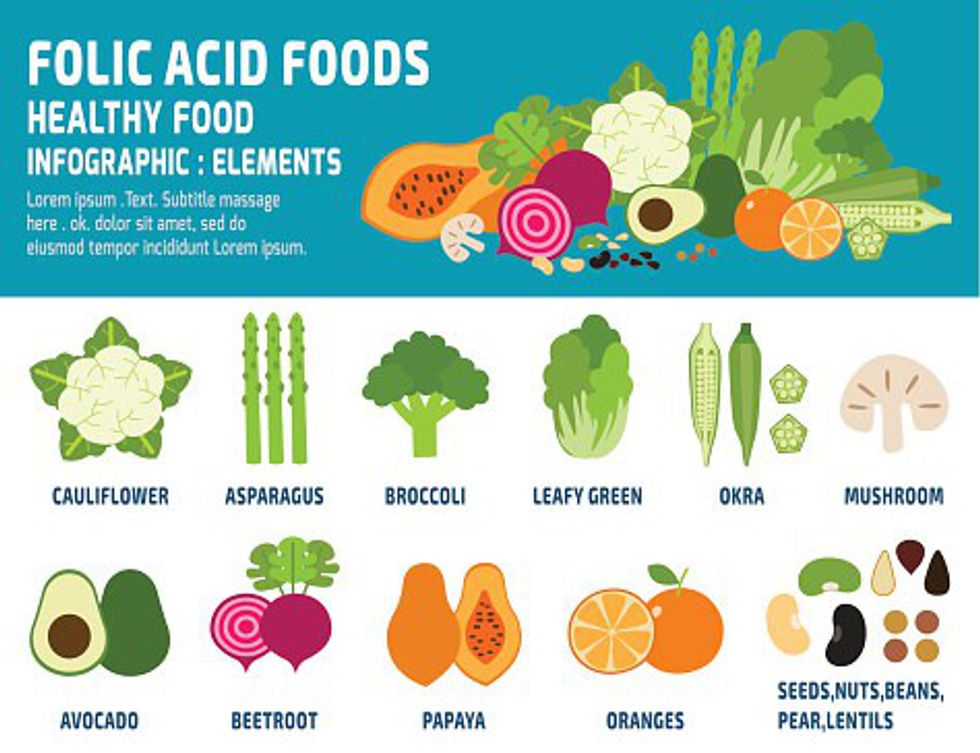North Carolina has the highest percentage of neural tube defects, which leads to Spina Bifida, in the country. This comes out to be 1 in 33 babies born in North Carolina. Haiti has the highest percentage in the world.
Folic acid is the chemical folate. It is found in many different types of foods, such as multivitamins, leafy greens, vegetables, beans and many more. When the chemical is in food it is called folate. Folic acid is hard to absorb through foods because how the digestive system works. Only half of the amount of consumption is absorbed. The biggest thing to remember is that absorption is different for everyone and it can depend on how the food is cooked or what it is.
There are two main types of neural tube defects: Anencephaly and Spina Bifida. Neural tube defects come from the way the spinal cord is enclosed at the top and bottom. If the spinal cord fails to close completely at the bottom, Spina Bifida occurs. Spina Bifida is when the spinal cord is exposed and often causes paralysis or difficulty in walking. Some of the other effects of Spina bifida can be loss of bowel/bladder control, learning disabilities or hydrocephalus (when there is water on the brain). There is no cure for Spina Bifida, the only option is to go through different treatment options. Most people are fine if treated early. Anencephaly is a fatal condition that causes the brain to be partially formed or not formed at all. This happens when the top of the neural tube has issues closing. The prognosis is usually stillborn, spontaneous loss, or neonatal death.
The hardest thing about Folic Acid is that the researchers do not know why it helps the neural tube defects or if it could help with other birth defects. The FDA suggested that women take folic acid daily in childbearing ages and in at least the first 3 months of pregnancy.






















